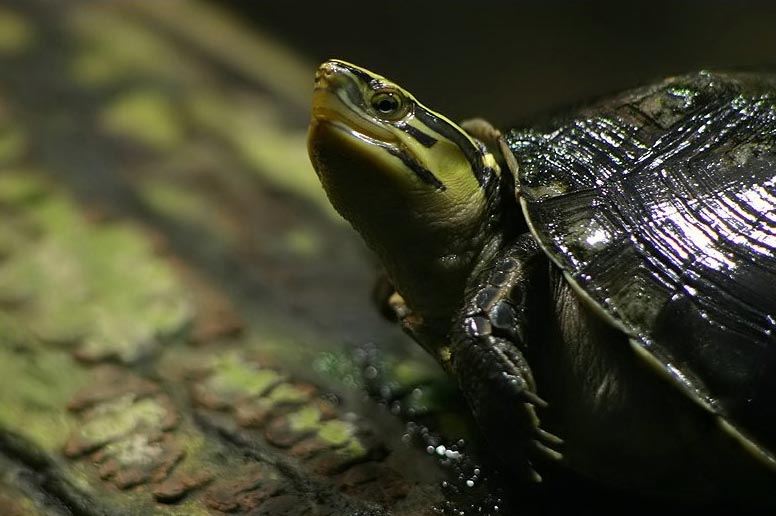The Malayan Box Turtle, also known as the Amboina Box Turtle or Southeast Asian Box Turtle (Cuora amboinensis), is a species of Asian box turtle that’s widely distributed across Southeast Asia. Its native habitats include the Asian mainland from northeast India, through Bangladesh, Burma and Thailand, across Laos, Cambodia, Vietnam, and Malaysia. 🐢
It is known for its distinctive features. It has a highly domed carapace (the upper shell) that is usually brown with a pale yellow to cream-colored plastron (the lower shell). The head is medium-sized, with the upper jaw slightly hooked. The skin color varies from olive to brown, with some yellow spots on the side of the head.
Their feet are webbed, making them excellent swimmers, and they also have a hinge on their plastron that allows them to withdraw completely into their shell when they feel threatened.
Diet:
The Malayan Box Turtle is an omnivore and its diet is quite varied. In the wild, it typically eats a mix of both animal and plant matter. This can include earthworms
The Malayan Box Turtle consumes a variety of plant matter. About half of its diet should be plant-based foods. Around 40% of the plant matter should be vegetables, and the remaining 60% is divided equally between fruits, greens, and fungi.
Some examples of vegetables that they can eat include carrots, peas, and squash. Fruits like apples, pears, and berries are also part of their diet. Greens such as lettuce, spinach, and kale are also consumed. Fungi, although not technically a plant, are also part of their diet.
Remember, a balanced diet is essential for the turtle’s health. Isn’t it fascinating how diverse their diet can be? 🐢🍎🥕🍄
